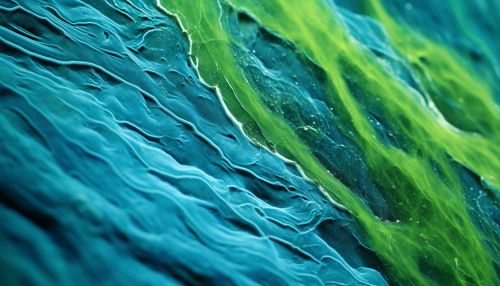Cyanobacteria
Introduction
Cyanobacteria, also known as blue-green algae, are a phylum of bacteria that obtain their energy through photosynthesis. They are the only photosynthetic prokaryotes able to produce oxygen. The name "cyanobacteria" comes from the color of the bacteria (Greek: κυανός, romanized: kyanós, lit. 'blue').


Taxonomy and Classification
Cyanobacteria are classified under the domain Bacteria, and were previously classified under the kingdom Monera. They are further divided into five subsections, based on their morphology and genetic characteristics.
Morphology
Cyanobacteria are a diverse group of microorganisms that are gram-negative, with a cell wall composed of peptidoglycan. They exist in various forms, from unicellular to filamentous colonies.
Metabolism
Cyanobacteria perform oxygenic photosynthesis, which distinguishes them from all other bacteria. They also have the ability to fix nitrogen in anaerobic conditions, a process known as nitrogen fixation.
Ecology and Habitats
Cyanobacteria are found in a variety of habitats, from freshwater to marine environments, and from hot springs to arctic waters. They can also survive in extreme conditions, such as deserts and rocks.
Role in the Environment
Cyanobacteria play a crucial role in the environment, contributing to the global carbon and nitrogen cycle. They also have a significant role in the formation of stromatolites, the oldest known fossils.
Human Use and Impact
Cyanobacteria have been utilized by humans in various ways, from being a source of nutrients to being used in biofuel production. However, they can also cause harmful algal blooms, leading to environmental and health issues.
Evolution
Cyanobacteria are believed to be among the earliest life forms on Earth, with fossil evidence dating back over 3.5 billion years. They are credited with causing the Great Oxygenation Event, a significant change in the Earth's atmosphere.
